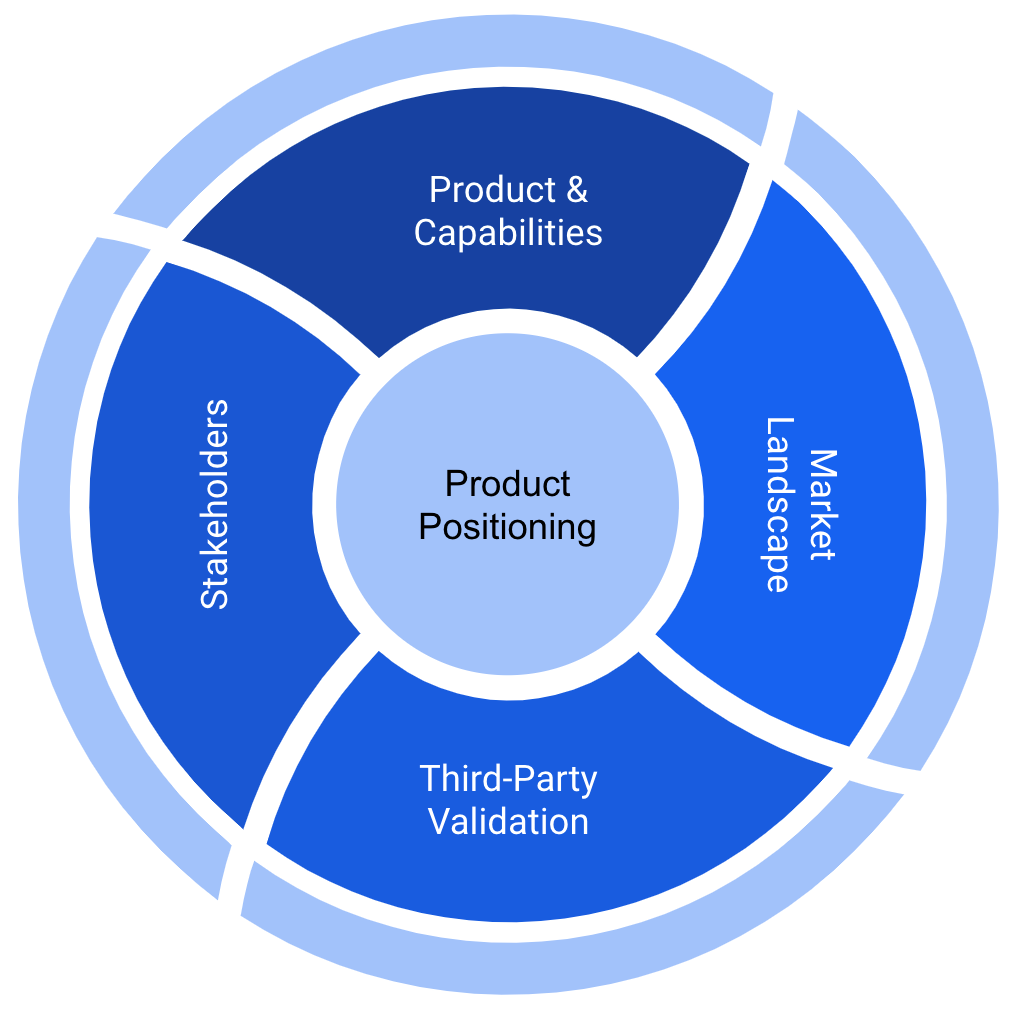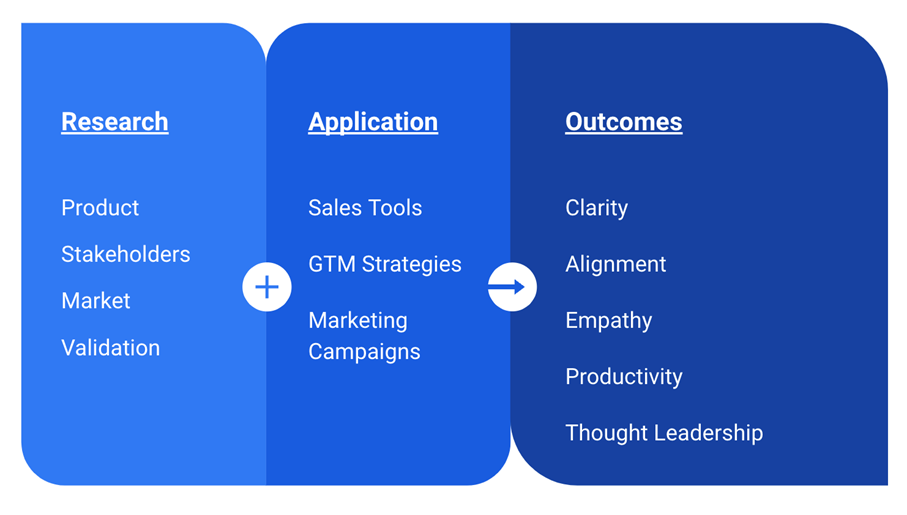Science of Selling

The Appleton Greene Corporate Training Program (CTP) for Science of Selling is provided by Ms. Chen Certified Learning Provider (CLP). Program Specifications: Monthly cost USD$2,500.00; Monthly Workshops 6 hours; Monthly Support 4 hours; Program Duration 12 months; Program orders subject to ongoing availability.

Personal Profile
Ms. Chen is a Certified Learning Provider (CLP) with Appleton-Greene and has over 25 years of experience in the software industry. She has earned degrees in both electrical engineering and computer science, and an MBA with a concentration in Marketing and Technology Management. Over the course of her career, Ms. Chen has been a software engineer, a product manager, and a product marketer, giving her a broad and unique perspective on new products and how complex products are built, marketed, and sold to business customers.
Through her experiences, Ms. Chen has contributed to the successful IPOs of two high-profile technology companies as a proponent and evangelist of the Software-as-a-Service (SaaS) delivery model through the early 2000s. She has utilized her unique ability to take complex concepts or products and create simple, clear descriptions and marketing content to communicate value to users and buyers across multiple business functions and industries, including Accounting/Finance, Business Intelligence/Reporting (BI), Customer Relationship Management (CRM), Human Resources (HRMS), Supply Chain Management (SCM), Marketing Tools, Customer Service Management (CSM), Business Expense Management, Open Data solutions, and more. She has worked with engineering, marketing, and sales teams across the entire United States, as well as India, Australia, and Europe.
To request further information about Ms. Chen through Appleton Greene, please Click Here.
(CLP) Programs
Appleton Greene corporate training programs are all process-driven. They are used as vehicles to implement tangible business processes within clients’ organizations, together with training, support and facilitation during the use of these processes. Corporate training programs are therefore implemented over a sustainable period of time, that is to say, between 1 year (incorporating 12 monthly workshops), and 4 years (incorporating 48 monthly workshops). Your program information guide will specify how long each program takes to complete. Each monthly workshop takes 6 hours to implement and can be undertaken either on the client’s premises, an Appleton Greene serviced office, or online via the internet. This enables clients to implement each part of their business process, before moving onto the next stage of the program and enables employees to plan their study time around their current work commitments. The result is far greater program benefit, over a more sustainable period of time and a significantly improved return on investment.
Appleton Greene uses standard and bespoke corporate training programs as vessels to transfer business process improvement knowledge into the heart of our clients’ organizations. Each individual program focuses upon the implementation of a specific business process, which enables clients to easily quantify their return on investment. There are hundreds of established Appleton Greene corporate training products now available to clients within customer services, e-business, finance, globalization, human resources, information technology, legal, management, marketing and production. It does not matter whether a client’s employees are located within one office, or an unlimited number of international offices, we can still bring them together to learn and implement specific business processes collectively. Our approach to global localization enables us to provide clients with a truly international service with that all important personal touch. Appleton Greene corporate training programs can be provided virtually or locally and they are all unique in that they individually focus upon a specific business function. All (CLP) programs are implemented over a sustainable period of time, usually between 1-4 years, incorporating 12-48 monthly workshops and professional support is consistently provided during this time by qualified learning providers and where appropriate, by Accredited Consultants.
Executive summary
Science of Selling
The act of selling is part art and part science. Top salespeople are true artists in their craft, using their innate talents to cultivate relationships and drive their leads to a closed deal. Underlying that talent is the science of selling – the sound reasons and motivators that can be captured and leveraged to equip our sales teams with the information and confidence they need to promote and advocate for our products. Product positioning is the tool we use to codify and refine the science of why people should purchase and use our products.
Complex products, including those that evolve continuously, often pose a unique challenge. Because of their complexity, many prospective customers simply do not have the time or interest to understand all the different facets and potential value the product may provide them. It is therefore up to the marketers and salespeople to be able to communicate the most important things to those prospects in the most compelling and efficient way to influence and close the sale.
A dedicated positioning effort is the most thorough and efficient way for a company to understand what its product does, the value it provides, and how it can best compete within the market it is in. Once compiled, a positioning foundation can provide marketing, sales, and product teams with a comprehensive resource that can be referenced for future marketing plans, sales strategies, and product directional guidance.
Ultimately, positioning that is well done will align the entire company around the products it sells with a consistent message and understanding of its value and the role it plays in the broader market. It can speed up sales training times, shorten sales cycles, and increase perceived product value, i.e. price.
Many people confuse or conflate the concepts of positioning and messaging in their marketing efforts. In this course, the concept of positioning focuses on the foundational data, resources, and proof points that build a solid case for how and why a given product or service delivers value better than the competition. Messaging, on the other hand, is what is developed for specific campaigns and initiatives. Campaign messaging can and should be drawn easily from the core positioning completed for a given product to ensure alignment, thoroughness, and legitimacy throughout the entire sales process, from awareness to close of sale.
A complete positioning effort will cover 4 primary areas: the product itself, the stakeholders in the purchasing decision, the broader market within which the product competes, and external validation to give credibility to the promises being made by the product.

Product: Perhaps unsurprisingly, complex products are sometimes difficult for even salespeople to fully grasp or articulate. The goal of defining the product is to make it as simple to describe and understand as possible. Once that is done, its value to the customer can be made clearer more easily. The differentiating features of the product are a critical way to emphasize the uniqueness of the offering and how it can deliver that value in a way that the competition cannot.
Stakeholders: In business-to-business sales, the buyers of a product are often different from the users of that product. A purchase decision is typically made by committee, with representation from multiple departments. Each stakeholder plays a different role in the decision process; some may be influencers, some may be gatekeepers, and some may hold the pursestrings. A savvy salesperson will be equipped with an understanding of the different roles represented in the room, what their different needs and goals are, what role they play in the ultimate purchase decision, and how to address each of those perspectives effectively.
Market: A product on the market is rarely a unique offering with no viable competition. Every good idea will have copycats and alternatives looking to take market share. Even “do nothing” or “maybe later” can be stiff competition for a product when the economy is struggling. Understanding the market and competitors is a critical aspect of developing the right strategies for growth and stability.
Validation: Depending on the risk aversion of a potential customer, third-party validation will be an important component of any pitch. Building a strong foundation of supporting content will require a strategy in itself, but can come in many forms. From market analysts to customer case studies to simple attributable quotes, it is one of the most important parts of any positioning foundation.
This 12-month course will take participants through a structured and thorough process of discussing, researching, and compiling this data into a cohesive, referenceable resource that can be repackaged into multiple forms: sales playbooks, marketing plans, content strategies, etc. Once compiled, core positioning only needs to be revisited and refreshed annually to make adjustments for product and market changes. After the core positioning is compiled, we will also workshop how to use this reference and repackage it for various internal audiences, as well as how it can be used to develop go-to-market strategies.
Curriculum
Science of Selling – Part 1- Year 1
- Part 1 Month 1 Problem and Solution
- Part 1 Month 2 Market Landscape
- Part 1 Month 3 Product Differentiation
- Part 1 Month 4 Targets and Stakeholders
- Part 1 Month 5 Value and Benefits
- Part 1 Month 6 Competitive Deep Dive
- Part 1 Month 7 Third-party Validation
- Part 1 Month 8 Ideal Customer Profile
- Part 1 Month 9 Positioning Core
- Part 1 Month 10 Internal Audiences
- Part 1 Month 11 Sales Stages
- Part 1 Month 12 Campaign and GMT Planning
Program Objectives
The following list represents the Key Program Objectives (KPO) for the Appleton Greene Science of Selling corporate training program.
Science of Selling – Part 1- Year 1
- Part 1 Month 1 Problem and Solution – Every product exists to solve a particular problem. In some cases, the problem may be simple and direct (e.g. a wristwatch will help me be on time for meetings). In other cases, the problem is multi-faceted and complex (e.g. I need a scheduling system that I can customize for my particular workforce and facilities). By focusing on what specific problems the product addresses, we start to understand what pain points prospects are facing. It puts product capabilities into context and builds empathy for what prospects are dealing with.
- Part 1 Month 2 Market Landscape – Without knowing where we are, we cannot determine where we want to go. That said, we need to understand the landscape of the current market and how we fit into that picture. In this session, we will examine the total addressable market, who our current and potential competitors are, how we compare to our competitors, the market’s perception of our product, and where we intend to be in what time frame.
- Part 1 Month 3 Product Differentiation – Every product offers advantages and disadvantages over alternative solutions. Sometimes these differences are obvious, but sometimes these differences may be subtle but significant, e.g. an underlying framework that shapes how the product works and the unique value it can provide. We will explore the obvious and subtle differentiators of the product and make sure that these differentiators are defensible – so that no competitor can make the same claims without equal scrutiny.
- Part 1 Month 4 Targets and Stakeholders – This session will focus on the specific demographic aspects of potential prospects, as well as the different stakeholders who may be part of the evaluation committee. Often, the purchasing decision for business products involves multiple departments, such as finance, information technology, and the business functional unit that will be using it. The representatives from each of these teams play a different role in advising the purchasing decision, so it is critical to understand the roles involved and what their specific needs may be.
- Part 1 Month 5 Value and Benefits – At the heart of all marketing and sales efforts are the value drivers of a given product – the reasons WHY a customer should buy that product. While sometimes these value drivers may appear obvious, it’s the unique benefits that only your solution can provide that will help it stand above the competition. We will drill down and refine the value drivers that customers may or may not be aware of, to help them understand all the ways in which they will benefit from your solution
- Part 1 Month 6 Competitive Deep Dive – In this session, we will focus on the top 3 products or companies that regularly compete in the same market for the same customers. We expand on the standard SWOT analysis (Strengths / Weaknesses / Opportunities / Threats) by also discovering how the competition competes: what are their popular pitch strategies, what are they saying about us, and what can we do to mitigate these threats? This research will inform many of the sales tools that will train and support the sales team in front of prospects.
- Part 1 Month 7 Third-party Validation – Your product’s most effective salespeople are not your company’s paid sales representatives. It is actually third-party advocates who are not directly associated with your company that are the most impactful, because of the appearance of objectivity – they don’t gain substantially from the promotion, so there must be some truth behind it. Referenceable customers are a gold mine because they prove your product delivers on all of the claims made in your marketing efforts. In addition to customer references, media articles, and public relations can impact overall market perception. Market analysts are also highly influential in many purchase decisions and may provide important insight. Regardless of whether your product is in its early stages of development or the market leader, third-party validation of the value of your product is the most important weapon in your marketing arsenal. You will need strategies on how to continually cultivate and promote these stories over time, and how to ensure they align with your value drivers and overall product positioning.
- Part 1 Month 8 Ideal Customer Profile – There is no such thing as a person who is exactly “average” in every respect. Everyone is a little taller or shorter, a little lighter or darker, a little heavier or lighter. The definition of “average” is not to find something that describes everyone, but to describe general expectations and handle the variations as needs arise. An Ideal Customer Profile (ICP) is no different. There will never be an ideal customer or prospect, but identifying specific characteristics and attitudes at the company will arm salespeople with the knowledge on how best to respond to areas where we may be perceived as weak, and leverage the areas where they may perceive us as strong.
- Part 1 Month 9 Positioning Core – We are now at the point where we can put together the formal positioning documentation for the product. This document will become the primary resource and reference used to develop all sales tools, marketing content, and messaging campaigns. At the end of this session, you will have a framework to build upon that will present the circumstances of the market, your prospects, your product, your value, your validation, and your competitors. Once compiled, this document will only need to be reviewed approximately once a year or when a major change in the market or company occurs.
- Part 1 Month 10 Internal Audiences – Within your company, there may be many teams who need to understand the underlying positioning of the product to describe and promote it correctly and in alignment with current business goals. Teams such as sales, RFP responses, support, development, executives, and marketing all need this insight but may require the information to be presented slightly differently from each other. This is normal and should be expected; it is the owner of the product positioning to be able to provide these “translations” as appropriate to the different internal audiences.
- Part 1 Month 11 Sales Stages – Salespeople often request new and prospect-specific content to be delivered immediately. To prevent last-minute emergencies, we will work with sales to understand the stages in their sales process and what sort of supporting materials they need during each of those.
- Part 1 Month 12 Campaign and GMT Planning – This workshop will take marketers through a sample process of developing a GTM or Integrated Marketing Campaign using the positioning document as a basis. This practical application will demonstrate how the positioning document can be leveraged in multiple capacities to speed up, align, and maximize the impact of marketing efforts going forward.
Methodology
Science of Selling
Marketing as a discipline has developed multiple models, such as Porter’s Five Forces, the 5 (or 7!) P’s of Marketing, SWOT, and many, many other frameworks. They all attempt to provide a simplified mnemonic to help practitioners remember the different facets they need to consider.
During this course, marketers and salespeople will work together to develop a core reference that can be used to quickly develop new content and ensure alignment across all promotional materials across teams. While we will not present a formal or unique framework mnemonic, we will put in place practical foundations that can be researched, documented, and updated continually that draws up the best of those previous models and provides a singular place for marketers and salespeople to reference at any time.
We will take a step-wise approach, each session focusing on a specific area that helps complete the picture of the competitive landscape. The core questions we will ask throughout the process is, “Why should the prospect want to buy our product?”, “How would this knowledge impact the decision-making process of a prospective customer?”, and “What can we do to maximize our strengths and minimize our weaknesses?”.
The primary perspective we want to take is that of the prospective customer. Why do they need this kind of product? Why should they choose our product over competitors’? What will compel them to buy our product sooner rather than later?
Over the course of 12 months, we will dive deeper into each of the four areas of positioning: Product, Stakeholders, Market, and Validation, taking the time to research and document our findings. We will use several marketing frameworks and rely on the lived experiences of salespersons who have both won and lost deals. It is critical to involve the sales team in this process since they are the ones on the front lines who have a lot of knowledge in their collective, anecdotal experiences, which only direct accounts can capture.
We will also spend time to learn how to use this wealth of information, from codifying it into a consumable resource to leveraging that resource as the foundation of content and campaigns. By actually practicing how to use it, marketers will be able to produce content faster and promote a more consistent and effective message to the market.

Step 1: Articulate the offering
Before any marketing can begin, the product or service must be understood thoroughly. Every salesperson should be able to answer the following questions:
● What types of problems is it attempting to solve? How does it do this? Why does this method work? What is the result of this approach? How is it different or better than competing solutions?
● What is the real pain point that is addressed by this solution? Does it benefit one type of buyer/user versus another? Are the benefits reaped of a financial nature (e.g. higher sales/lower costs); time saved; efficiency/quality of life; reduced labor, effort, or staff?
Step 2: Know your market
To move forward, you need to know where you are starting from. Before entering competitive situations, you must understand the broad trends, needs, and players you are up against. Preparation is the key to avoiding surprises.
● What trends are currently top of mind for prospective customers?
● Are there any glaring problems or opportunities that can or should be capitalized on?
● What big moves are our competitors making?
● What are our strengths and weaknesses compared to competitors, and how can we emphasize our strengths and minimize our weaknesses?
Step 3: Understand stakeholder needs
For consumer products, the buyer is typically also the person who will be using it or benefiting the most from it. However, in many business sales situations, purchase decisions are made by committee. Oftentimes, this means that the ultimate decision-maker who holds the purse strings may be different from the users of the solution that is bought. In these cases, there are many different stakeholders involved who may influence the ultimate decision. Salespeople should be able to empathise and address questions from all of these contributors.
● What departments are involved in the purchase decision (CFO, Finance Department, Purchasing, IT, functional teams, etc.)? Do each of these teams/stakeholders have their own agendas that our product may be helping/thwarting if chosen?
● Do different stakeholders have aligned or conflicting needs? Can we address each of those needs adequately so each stakeholder feels heard and like they are an important part of the decision process?
Step 4: Get third-party validation
The truth is, the best salesperson for your product isn’t an employee of the company. People naturally look for others to validate their inclinations, whether it be peers, experts, or the general media, and may be skeptical of a sales pitch in any form.
● The best salesperson will always be a past customer who can attest to the benefits they achieved with your product. Do you have referenceable customers who are willing to speak on your behalf?
● What about industry analysts? Often analysts can strongly influence customer decisions, so are there strategies you can use to help them understand your strengths?
● How can you work with your public relations teams to get more exposure in the media? Media coverage implies that the work you are doing is something of interest to the wider public and that people should know about.
● Do you have these case studies and examples ready for salespeople to reference when requested? If not, how should we prioritize capturing these so they can be reused by sales?
Step 5: Formalize the Foundation
The primary consumer of the information contained in the core positioning is ultimately the Marketing Team, who is building and launching ongoing sales tools and campaigns. Although many organizations skip the process of codifying the results of all of the previous research effort, doing so makes it easier to onboard new marketers, align campaigns and messaging, as well as ensure accuracy over time – which is especially important for products that may change or evolve over time, such as software.
● Is the core easily accessible for all marketers to read and reference? Is it validated/refreshed regularly? Is the document easy to understand, in a style that can be skimmed easily?
● Can other teams, such as Sales or Development, also review and validate the content? Should the positioning be repackaged for other teams so they can consume the information more quickly or in a simpler/more direct format?
Step 6: Execute on the Plan
With the core in place, it is now time to build out a comprehensive go-to-market plan and/or content plan that supports an integrated marketing strategy. For each stage of the sales cycle, marketing teams can review each perspective and develop unique messages for each campaign, supported by content that aligns with the reasons why customers should choose your product over the competition.
● What is the key message for the next campaign? Which buyer/decision-maker are we targeting? What is the next step we want them to take?
● What pain point/value driver is the most impactful in their lives right now? How does our solution address that need? Why should they believe our product can help them?
● What content have we developed that supports our argument? How are we going to fill in our content gaps?
Industries
This service is primarily available to the following industry sectors:

Technology
Technology in its various forms impacts every aspect of human life. From modern farming and shock-absorbing shoes to supersonic jets and neurosurgery, there are few areas that have not been impacted by innovative ideas and implementations that would have been unthinkable not so long ago.
But as it is with every new idea, getting other people to understand and embrace change can be difficult. For some technologies, the benefits can be seen immediately, such as how wheels and an axle can make moving heavy objects much easier. For other technologies, the benefits are much more difficult to see and can be met with skepticism or fear as a result, such as the impact of vaccines on an individual or an entire population.
Adding to this difficulty may be competitors who can steal ideas and implementations. Innovative products are difficult to create but are often easily copied. Although patents can protect some aspects of an invention, there are well-known ways to get around a patent filing. Imitators will try to extract value in any way they can, without going through the cost of experimenting, designing, and testing an original idea.
As society has evolved, new technologies are becoming more specialized, complex, and difficult to describe. However, human nature has not changed very much, and buyers can still be skeptical or fearful of new things they haven’t seen before or aren’t used to. For most consumer products, the sales cycle can be straightforward: The product does something, and based on how much money a person desires to spend, they can get the product at any level of quality they choose.
For business products, the sales cycle can be much more complicated. Understanding the factors that influence buyer decisions is a critical skill that every company and salesperson needs to be aware of. Business solutions may offer more functionality than a potential customer may need at the moment. The amount of money they are willing to spend might be malleable, based on their perceived value of the product. There may be personal factors at stake, such as someone’s effort to build or preserve a reputation, potential incentives they are looking for, or outside partners who aren’t in the room but need to be kept happy.
Additionally, the pace of innovation has continued to speed up, which creates its own challenges. Hardware and software have some of the most rapid obsolescence rates of any industry; hardware tools such as smartphones become outdated within 2 years, and popular software updates may occur monthly, weekly, or even daily. Humans, as consumers, simply can’t keep up to speed with such frequent changes.
The challenges for technology companies, then, are: 1) How can we address the needs of the business customer most directly and impactfully? 2) What details about the product should we focus on to make our case, but not bore the customer with unnecessary information? 3) What other needs does the customer have that are not about the product, but which we can leverage to influence their decision?
Selling technology to savvy business customers is significantly more complex than a single consumer product sale. While it is highly dependent on the skill and talent of the sales agent, technology companies can do a lot to prepare their salespeople with the knowledge and supporting information they need to make the strongest case for their product to maximize their ability to outpace competitors and maximize revenues.
Locations
This service is primarily available within the following locations:

San Francisco Bay Area
The moniker, “Silicon Valley,” was coined by Don Hoefler in 1971 when he wrote an article on the semi-conductor industry for a weekly trade newspaper, but the region had been a fountain of innovation since the 1800s, when the port of San Francisco was a hub for telegraph and radio equipment. In the 1940s, the silicon transistor was invented and manufactured there. In 2022, it was estimated that the technology industry in the San Francisco Bay Area (Silicon Valley), California contributed almost $2 trillion to the United States GDP. With companies founded there like Apple, Google, Nvidia, Facebook, Tesla, and ChatGPT, it remains one of the most innovative and influential regional areas for technology innovation in the world.
Silicon Valley has long been a hub of innovation, thanks to San Francisco being a major port of entry and home to renowned universities like Stanford and UC Berkeley. Even today, many students from these schools proudly sprout new businesses in the area, often technology firms based on cutting edge research from their respective engineering departments. Successes such as Hewlett-Packard, Cisco Systems, Alphabet (Google), Netflix, Intuit, Apple, and Electronic Arts – all started in Silicon Valley – are just a few examples of the legacy and capabilities that have been developed, fostered, and that drive continued technical and economical excellence in the area.
The character and atmosphere of innovation is also sponsored greatly by the venture capital and investment community that has grown in the area. Well-known VC firms such as Sequoia Capital, Adreessen-Horowitz, Accel, and Greylock Partners have invested in highly successful “unicorns” that are some of the most popular platforms used today, such as Facebook (Meta), Google (Alphabet), Groupon, NVIDIA, Apple, and more. By some counts, there are over 200 venture capital firms actively investing in various Silicon Valley startups, all hoping to find their own unicorns, but also contributing to the atmosphere of entrepreneurship and innovation throughout the region.
Even as businesses in Silicon Valley have created and lived through multiple technology waves, such as the personal computer, client-server model business model, the internet, SaaS, social media, and smartphones, they still continue to innovate and push the boundaries of what can and will be available to humankind. Current cutting edge technologies include Natural Language Processing (NLP), Artificial Intelligence (AI), and Electric Vehicles (EVs), all of which are actively being researched, developed, and tested by well-known companies based in Silicon Valley.
New York City
New York City hosts the second largest technology hub in the world after Silicon Valley. With its bustling, diverse population and foundation as a financial investment hub, it has quickly grown in number of tech companies and workers over the last 20+ years. As of 2020, reports from the NYC Comptroller’s Office show that more people are employed in the technology sector in NYC than on Wall Street, and that number is expected to rise.
Like Silicon Valley, some of the factors that contribute to its growth are a strong university system continually feeding new talent into the market, as well as an active investment community, which is fitting for a city known as the top financial center in the world. Unsurprisingly, fintech is one of the most active technology verticals, focused on developing tools for banking and financial services, followed by e-commerce and digital media.
Another strong contributing factor to the growth of tech in New York is the involvement of local government. In the past several years, many government initiatives have been passed that have sought to foster growth of new startups and encourage investment by large technology companies. STARTUP-NY began in 2014, which sought to bring startups closer to the research and development happening in the local universities. Startups would receive access to this research and receive expertise, access to research and development resources, and tax incentives if located near or on school property.
In 2015, New York passed the Employee Training Incentive Program helped create internship programs in STEM (science, technology, engineering, mathematics) through tax credits to businesses that offered them. The FAST NY grant program launched in 2022 has specifically called out its desire to sponsor shovel-ready sites to welcome and support large technology manufacturers in the area, among other industries. Both of these initiatives demonstrate New York’s understanding of the impact that the technology industry can have on their local and global economies, as well as their desire to be an active leader in its growth and development in the future.
Thanks to many of these factors and efforts, New York City has become a key location that has provided innovations in the technology areas of business software, e-commerce, fintech, healthtech, AI, blockchain, cybersecurity, and more.

Washington, D.C.
In recent years, the DC Metro Area (which includes surrounding areas in Virginia and Maryland, fondly referred to as the “DMV” by locals) has become one of the top technology hubs in the country. The federal government is a large technology consumer across their investments in govtech, cybersecurity, aerospace/defense, medical research, etc. Several high-profile organizations make their home in the area, including many prestigious hospitals, universities, and pharmaceutical research companies, all looking for modern innovations to facilitate their work and missions.
In 2000, Washington, DC passed the New E-Conomy Transformation Act. The new bill provided several tax incentives and grants to attract high-tech companies to the area. Although much of the recent tech hype in the area is due to the arrival of Amazon’s HQ2 in Northern Virginia, the tech industry has been in the area for quite a while. AOL was headquartered in Northern Virginia since the 1990s. In 2008, Google’s arrival and large office space investment was big news. Since then, other large tech companies have also invested in creating a footprint in the city, including Facebook (Meta) and Amazon, along with long-time resident companies, IBM, Oracle, and more.
Unlike many other areas of the country, the tech industry in the DMV also employs a wider breadth of talent than other development centers in the country, as the federal government continues to try to keep up with the unrelenting evolution of technology. Companies who sell their technologies to the government need to focus on communicating the value and benefits of their solutions to potentially less-technologically savvy buyers and users to compete with alternative solutions. In addition to development talent, technology companies may employ lawyers, educators, and lobbyists to help sway national policies over the industry. These representatives are uniquely trained in not only their own specialities of law, teaching, or political science, they must also understand and articulate what a given technology can do in oder to effectively convey the benefits and potential impacts of these technologies to policymakers.
The importance of the DMV as a technology hub may reside less in the pace of cutting-edge innovations that come out of the area, but more about the ability of these companies to communicate effectively about their products and services so that stakeholders and policymakers can make informed decisions with regards to the continues growth and the industry’s ability to thrive in the near and long term future.
Program Benefits
Marketing
- Category Definition
- User/Buyer Distinction
- Pain Points
- Value Drivers
- Benefits
- Market Landscape
- Differentiation
- 3rd-Party Validation
- Messaging Consistency
- Thought Leadership
E-Business
- Product Description
- Ideal Customer Profile
- Qualifying Criteria
- Buyer Personas
- Talking Points
- Sales Collateral
- Competitive Tactics
- Objection Handling
- Customer References
- Pitch Deck
Production
- Market Needs
- Idea Generation
- Long-Term Direction
- Feature Prioritization
- Product Strengths
- Differentiating Capabilities
- Competitive Challenges
- Customer Management
- Product Launch Support
- Strategic Partnerships
Testimonials

Veeva Systems
“I was fortunate enough to work with Ms. Chen when she covered for our Director of Marketing who was on leave. Ms. Chen assumed the role seamlessly and immediately “hit the ground running”, orchestrating the team to churn out high-quality assets with remarkable speed. She proactively built and leveraged her internal network within the company to liaise with the right people for the right decisions and reviews, but she also effectively delegated and developed junior members of the marketing team to manage much of the legwork, as well as doing much of the legwork herself where appropriate, which greatly eased the burden on Strategy and SMEs in this high-speed environment. She was conscientious about the quality of the material and challenged our thinking in ways that truly elevated the value of each asset and made them more impactful. I highly recommend Ms. Chen – she is a powerhouse!”

Zendesk
“If you are looking for a strong product marketer who could quickly come in and make an impact – look no further. Ms Chen is the one. In the short amount of time that she was with us at Zendesk, she made a huge impact on our team and raised the bar for everyone around her. Whatever projects Ms. Chen took on, she executed them with excellence and left some big shoes for others to fill. Her repositioning work for our new [product] webpages is a great case in point. Thanks to her technical background, Ms. Chen was able to understand the product intimately and message it in a way that resonates with the audience while still maintaining the core essence. Her work laid a solid foundation for our team in developing future marketing and sales assets. Any team would be lucky to have her. It was a pleasure working with Ms. Chen and I look forward to working with her again in the future.”

Workday
“Ms. Chen has a unique blend of skills and capabilities that combined make her a highly effective product marketer and someone that fast-moving, high-growth companies would benefit from having on their team. She quickly grounds herself with the facts, then moves swiftly with a high degree of creativity and out-of-the-box thinking. Her work set the gold standard of quality and results, so much so that anything she produced was looked upon as THE benchmark to strive for! Ms. Chen also has a strong operational focus and simply gets stuff done. Her output is amazing. She leverages her energy and capacity to help others succeed. She is a strong team player who initiated the development of much-needed tools to help our growing organization operate more efficiently. And, she is a fun person to work with — smart, energetic, caring, forthright, and direct. I would work with Ms. Chen again in a heartbeat and highly recommend her.”

SAP SuccessFactors
“Ms. Chen is one of the most brilliant people I have ever worked with. She has a strong product vision and can quickly turn it into detailed solutions that are practical and extremely beneficial for customers. Her product direction is incredibly spot-on to what customers want. She takes the time to request feedback from both customers and employees in the field to better the product. The excellence of her work has not gone unnoticed as she was asked to take on a brand new product and has already turned it into a competitive stronghold for our company. Ms. Chen is not only brilliant with product management, she is an amazing co-worker who will partner on an issue (even those she doesn’t own) until it gets resolved. She is reliable, conscientious, and one of the most fun people I’ve ever known!”

Socrata (now Tyler Technologies)
“I collaborated with Ms. Chen during her time in Product Marketing at Socrata. She proved herself a detailed, driven, context-sensitive colleague, and a key advocate for change from within our company. She was one of the main channels for communicating product updates and competitive intelligence to our sales and services teams. Ms. Chen was proactive in working with the whole of Socrata to distill essential product initiatives into powerful messages and communication for us to take to market. I look forward to working with Ms. Chen again in the future!”
More detailed achievements, references and testimonials are confidentially available to clients upon request.
Client Telephone Conference (CTC)
If you have any questions or if you would like to arrange a Client Telephone Conference (CTC) to discuss this particular Unique Consulting Service Proposition (UCSP) in more detail, please CLICK HERE.













